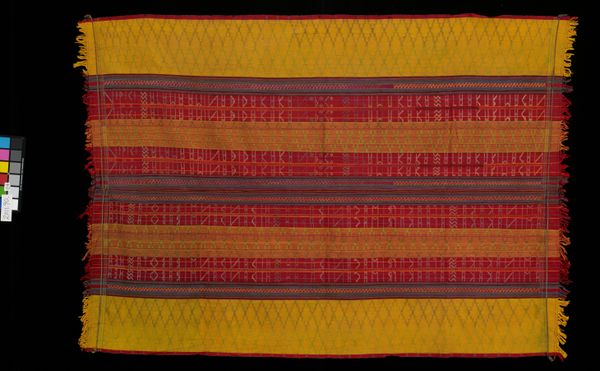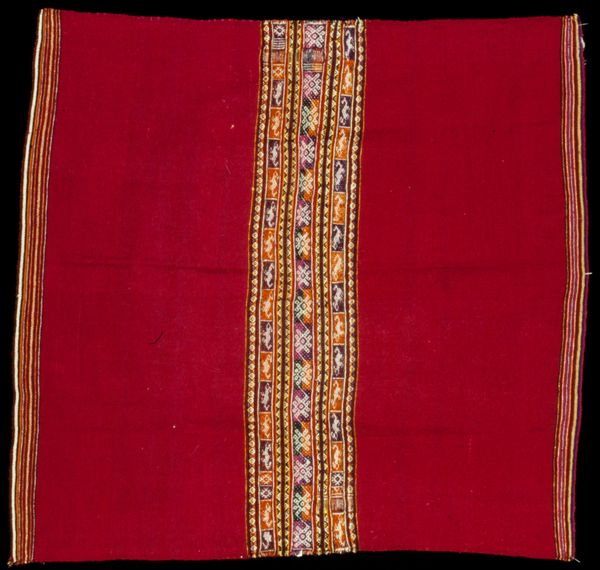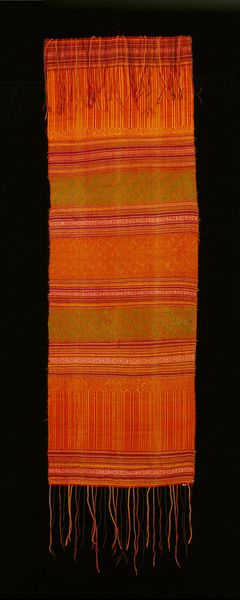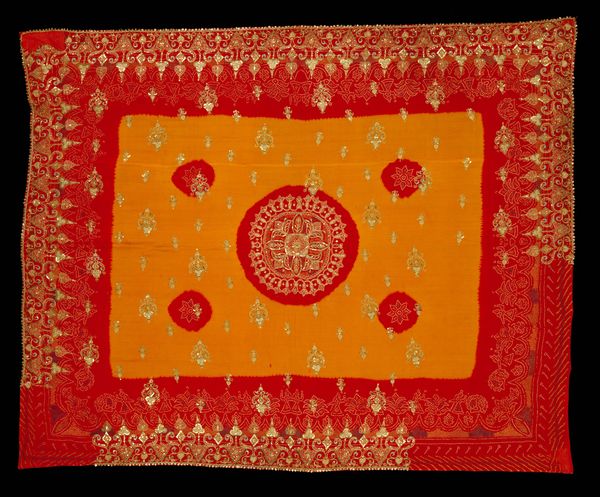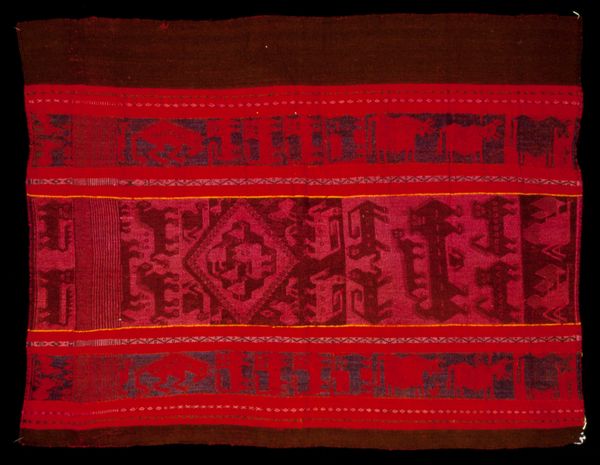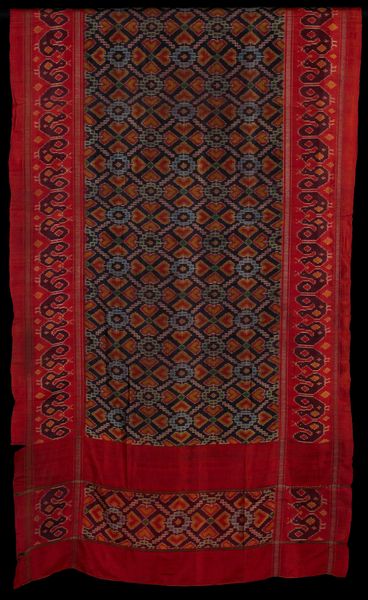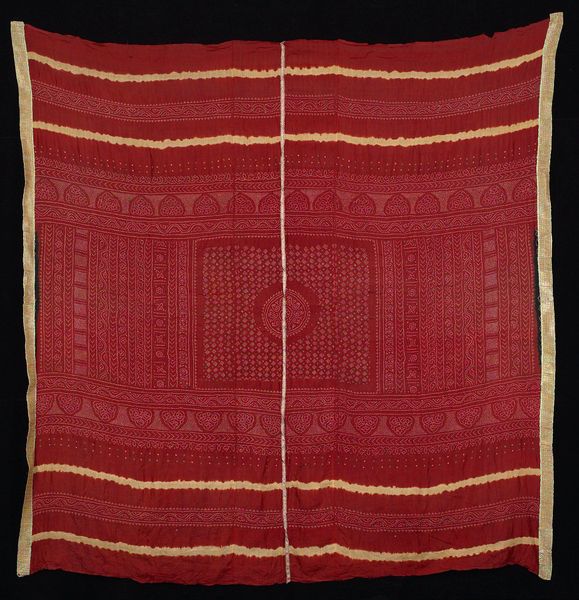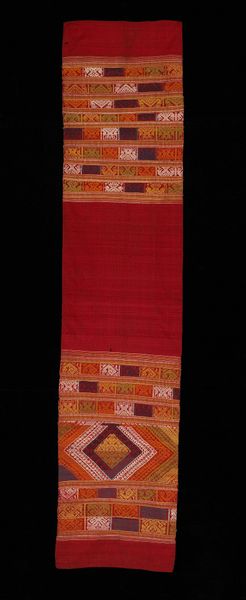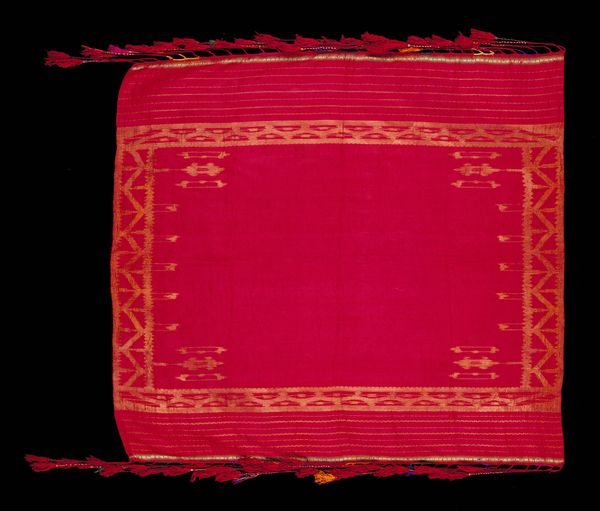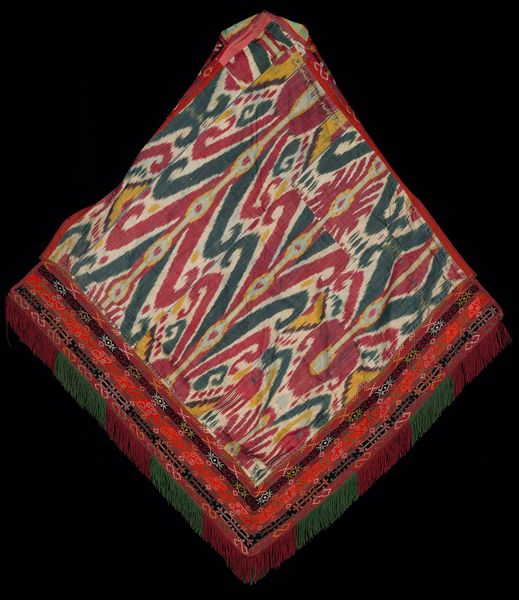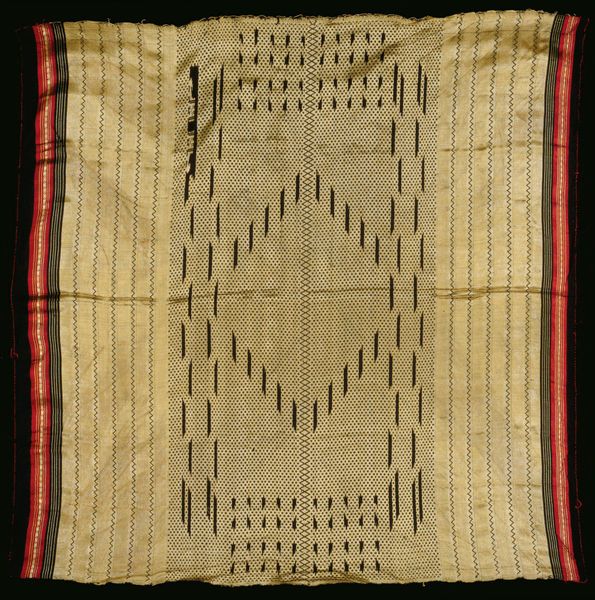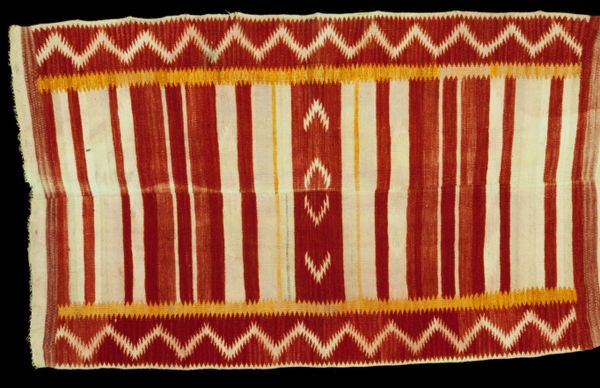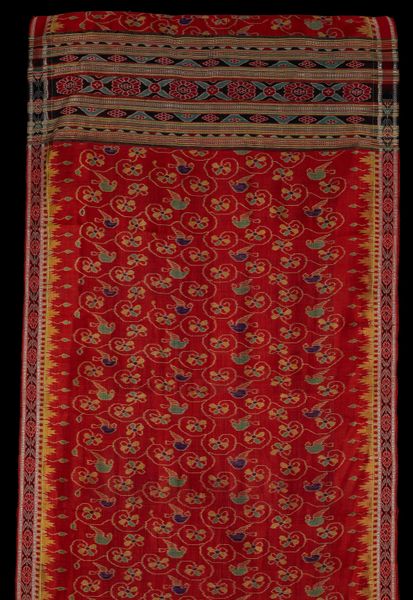
silk, textile
#
pattern heavy
#
natural stone pattern
#
silk
#
textile
#
collage layering style
#
fashion and textile design
#
geometric pattern
#
repetition of pattern
#
pattern repetition
#
textile design
#
decorative-art
#
imprinted textile
#
layered pattern
Dimensions: 62 1/2 x 70 1/16 in. (158.75 x 177.96 cm)
Copyright: Public Domain
Editor: Here we have the "Inner Wedding Veil (Patori)", probably created between 1925 and 1950. It’s a beautiful textile, made of silk and cotton, and right away I’m drawn to its layered geometric patterns and vibrant colours. It feels so carefully constructed. What’s your take on this piece? Curator: Ah, this veil whispers stories, doesn't it? The "Inner Wedding Veil"— I can almost feel the anticipation, the hopes woven into those threads. See how the patterns repeat, yet never *quite* mirror? That, to me, speaks to the individual journeys merging into a shared path. Are you sensing that too? Editor: I do now that you mention it! The slight imperfections are beautiful and add so much character. Is there a cultural context we should consider? Curator: Absolutely. Consider the time—early to mid-20th century. Imagine the world these women inhabited. A time of tradition, but also budding change. The veil isn't just decoration; it’s a symbol. Perhaps of protection, maybe even a quiet rebellion in those mismatched motifs! I wonder if the red borders symbolized a break from the old, framing something excitingly novel? Editor: So it's not just about the beauty of the craftsmanship but a personal expression? It definitely makes me rethink the power of textiles. Curator: Exactly! Isn't it remarkable how something so functional can carry so much meaning? Each stitch a thought, a dream, a piece of the wearer's heart. Editor: I’m definitely going to look at textiles differently now! Thank you.
Comments
minneapolisinstituteofart almost 2 years ago
⋮
Fine tie-dye was a luxury item, often copied by less expensive techniques. Block printing gave a good imitation, as shown by the wedding veil on the right. Its silk ground and metallic threads furthered the illusion of a costly tie-dyed piece. The veil on the left is a more unusual example; here, embroidery is the means of mimicry. The young woman who stitched this veil for her wedding emphasized its festive nature by using cross-shaped patterns associated with chaupar, a popular Indian game known in the West as "parcheesi."
Join the conversation
Join millions of artists and users on Artera today and experience the ultimate creative platform.
